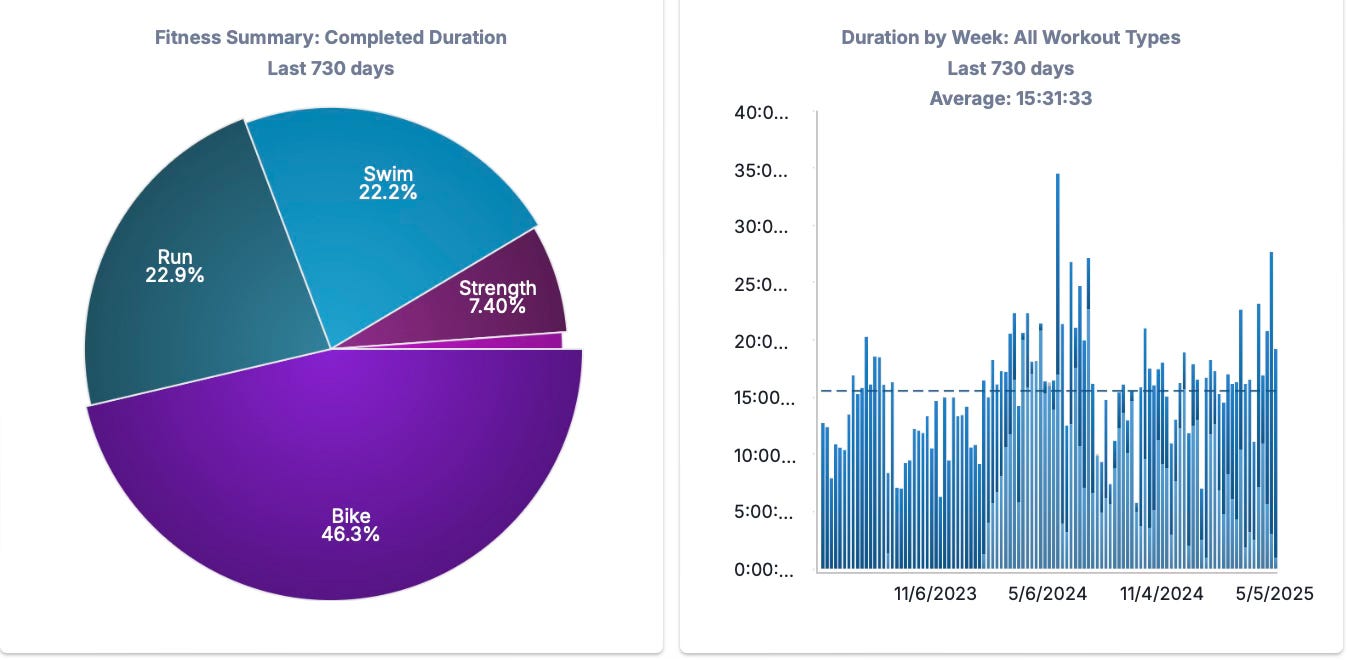We continue our discussion of block periodization with Race Specific blocks. You will hear lots of terms used interchangeably with this period of your season.
Race Specific
Race Specificity
Race Efficiency
Build Period
Specific Preparation
What these terms have in common is the overriding goal of getting you ready to race. With that goal in mind, most readers will find their best option is to continue an Endurance & Strength focus and add shorter-duration events. These low-priority events enable race skills to be practiced and provide a dose of high-intensity training.
Build Your #1 Thing
During the race specific block, remain focused on the number one thing you need to improve for your race. Don’t limit your thinking to race velocity training, especially if you are new to racing, or stepping up your race distance.
Nutrition. Specifically, the ability for uptake of energy at race-specific velocities. Shorter duration events provide an opportunity to test race intake rates at higher than goal race intensity.
Pacing. Is there a pattern with past race performances that needs to be addressed? Are you able to get your best performances into your key races? Are you optimizing your energy pacing across your events?
Durability. The longer our goal event, the less impact our short-duration benchmarks have on our overall performance. Durability, the capacity to not fade over time, becomes an important factor. Volume is the best way to address a durability limiter.
Specific-Pace Work. In the Strength & Endurance block, our workouts will be targeted based on our training zones (see Training Zone Essentials).
If race velocity happens to overlap with one of your training zones then you’ve already been doing specific-pace work.
If race velocity is higher, or lower, than where we spend the bulk of our training then it’s essential to build specific-pace workouts into our key sessions.
Let’s pause and consider everything I’ve written so far.
Nutrition, Pacing, Durability, Specific-Pace Work, Low-Priority Racing
Avoid trying to do everything.
Remember your #1 thing and get it addressed.
We only have a handful of race-simulation workouts each season. Give yourself every opportunity to succeed.
Write out your game plan.
Fuel and hydrate appropriately.
Start relaxed.
Finish strong.
Save your best for race day.
After each race simulation workout or event, write down what actually happened and compare it to your written plan.
Include:
What went well.
Everything you ate and drank (figure out your intake per hour).
Challenges faced and lessons learned (pacing errors, gear issues).
Emotional takeaways (was arousal appropriate, was emotional control a factor).
Future goals or plans (next race, training adjustments).
Keep it brief, save the report and look for patterns over time.
Keep iterating towards better.
Training Race Efficiency
The most effective way to improve your efficiency is chronic long term adaptive volume, combined with:
A year round focus on maintaining minimum weekly workout frequency.
Strength and force training, particularly sport-specific movement patterns and plyometrics.
A relentless focus on technical improvement.
Of these, you’ll find the best empirical support for long term adaptive volume.

You may have heard elite coaches talking about training race efficiency. The context is:
Using energy deficits to enhance efficiency (using less energy for a given velocity), and
Managing carbohydrate intake to boost metabolic flexibility (burning more fat for fuel).
My advice is to avoid seeking energy deficits. Fuel the burn and focus on getting the work done to prepare for your event.
Given the higher work rates of the Race Specific block, most athletes will be in deficit during their longer and race-simulation days. You are only getting a handful of key days in this block. Ruining one of these days, and compromising your recovery, isn’t worth it.
The athletes who can handle depletion training, need it the least.
More on getting to race weight in our Body Performance and Nutrition chapter.
You can find additional thoughts on race specificity in the video below.
Back to The Physics of Performance
Back to Table of Contents



